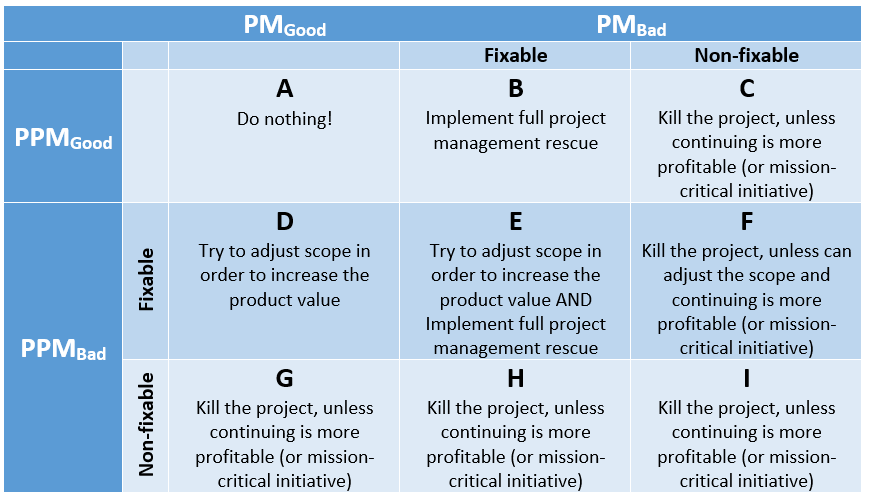Article - The Ultimate Matrix for Troubled Projects Recovery
Submitted by Jamal Moustafaev on Sun, 12/11/2016 - 15:19
Introduction
In recent years I have been spending a good portion of my consulting time on rescuing troubled projects around the world. Very often I would receive an e-mail stating something to the effect of:
Hi Jamal,
Our company is currently experiencing certain issues with our (typically flagship) Project X and we would like to hear your opinion on how to remedy the situation. Would you be able to fly here for a project audit?
As a result of this, after having been exposed to a multitude of various troubled initiatives, I decided to attempt to systemize different types of problematic projects and potential approaches to their rescue (see Table 1). Please also note that I am trying to combine both the project portfolio management (i.e. value) and project management (i.e. on-time, on-budget, etc.) aspects of project success.
Table 1

